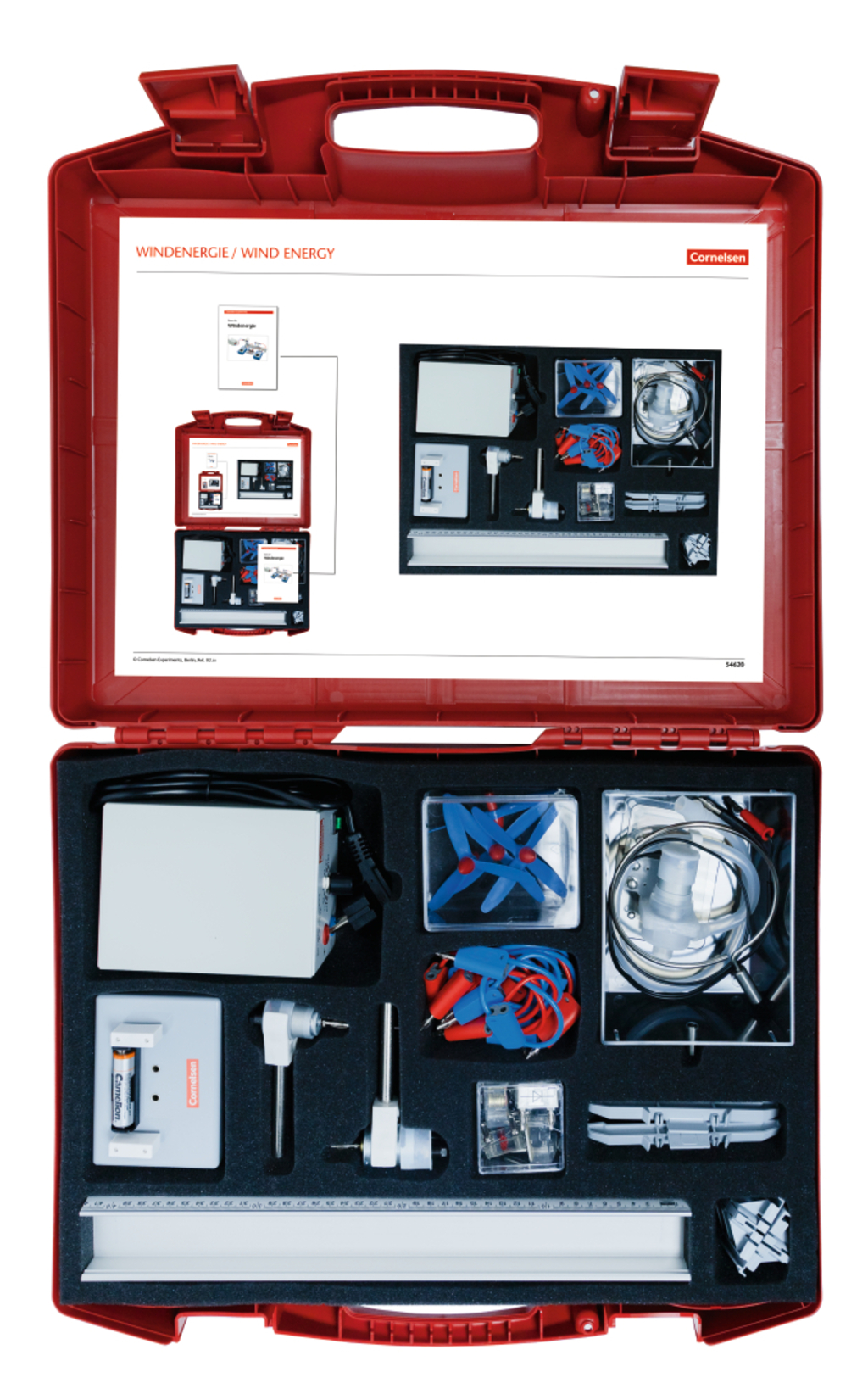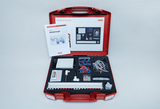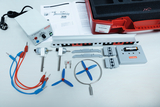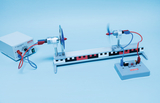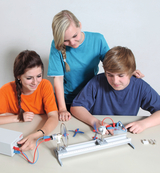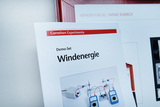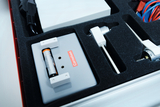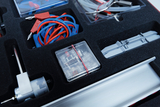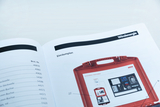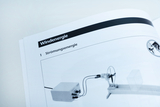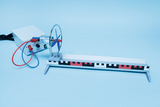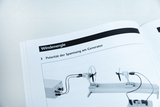Demonstration kit Wind energy
This kit contains apparatus for carrying out fundamental experiments on the use of wind energy.
Use of wind energy has now become well established as a well known means of converting energy. The kinetic energy of wind is being used more and more often as an alternative source of energy by converting it into mechanical energy and then into electrical energy.
This kit allows to investigate the possibilities and limitations of a simple wind generator. The effects of various factors such as the type of rotor, the wind speed, the wind direction and others can be compared and evaluated. In order to create the requisite flow of air, a simple fan is used.
In this experiment, students learn about air flow.
In this experiment, the flow energy of the air is first converted into rotational energy by the rotor blades and this in turn is converted into electrical energy in the generator.
We will shortly provide you with a description of the experiment at this point.
In this experiment, the increase of the supplied electric energy is observed due to the influence of the wind speed at the wind generator.
In this experiment, the students investigate the influence of the wind direction.
Students observe the behavior of a wind generator by turning a light bulb on and off.
In this experiment, the students investigate the influence of the rotor blades on the voltage generated.
In this experiment, the students determine the resistance and power values of the wind generator and can find out at which resistance values and at which load the maximum power of the wind generator can be output.
Students investigate when an accumulator has stored enough energy to light a light bulb.
In this experiment, the students investigate the use of wind energy. The practical use of such combinations of wind generators and water pumps lends itself to the irrigation and drainage of agricultural land and the storage of water in elevated tanks.
- 2 × Clamp slider
- 1 × Rotor with 2 blades with 4 mm socket
- 1 × Rotor with 3 blades with 4 mm socket
- 2 × Rotor with 4 blades with 4 mm socket
- 4 × Plug lead, 25 cm, red
- 4 × Plug lead, 25 cm, blue
- 1 × NiCd-Accu rechargeable 1,2 V, 0,5 Ah, KR 15/51
- 1 × Base for plug-in elementsand battery cell holder
- 1 × Lamp holder MES on 19 mm plug-in element
- 1 × Bulb, MES, 1,5 V/0,15 A set of 10 pcs.
- 1 × Electric motor on rod
- 1 × Generator on rod with 4mm-plug-shaft
- 1 × Water bassin, transparent
- 1 × Pump with motor and tubing
- 1 × Power supply unit, 1 to 6 V/ 2.5 A DC
- 1 × LED plug-in-element, red without pre-resistor
- 1 × Resistor, variable 100 ohms, plug-in element
- 1 × Silicium diode, plug-in element
- 1 × Ring on rod, 110 mm Ø(i)
- 1 × Rail, 420 mm
- 1 × Plastic box 105x90x50 mm
- 1 × Plastic box 60x60x30 mm
- 1 × Plastic case ca.540x450x150 mm
- 1 × Foam insert grey, knobbed515x360x30 mm
- 1 × Foam insert for 54620, 515x360x110mm
- 1 × Storing diagram,int.vers.(Wind energy)
- 2 ×
- 1 ×
